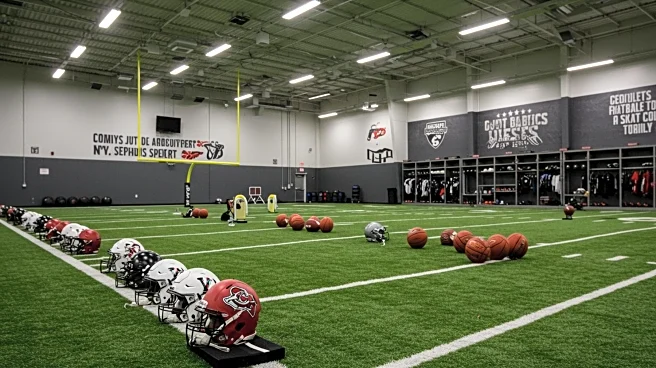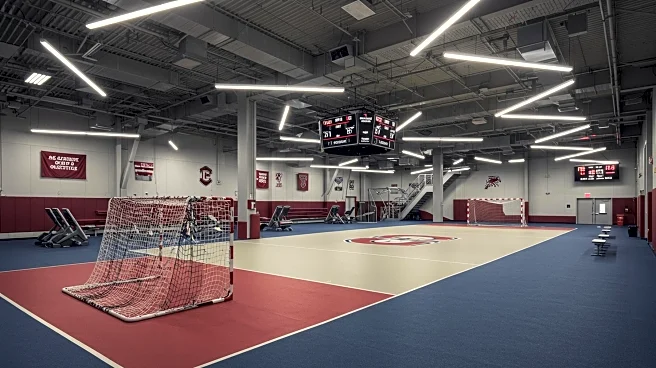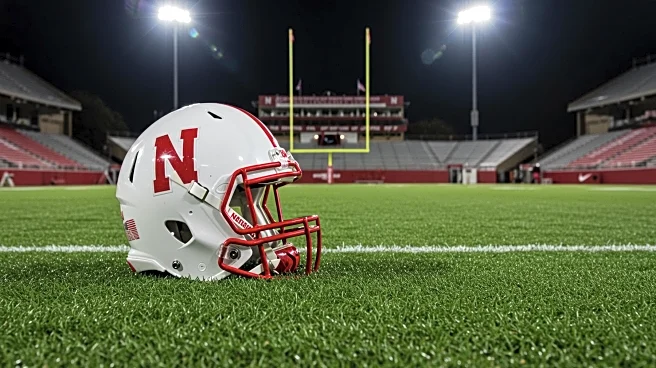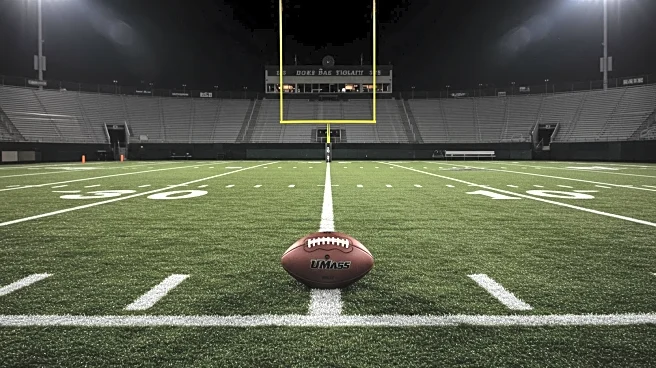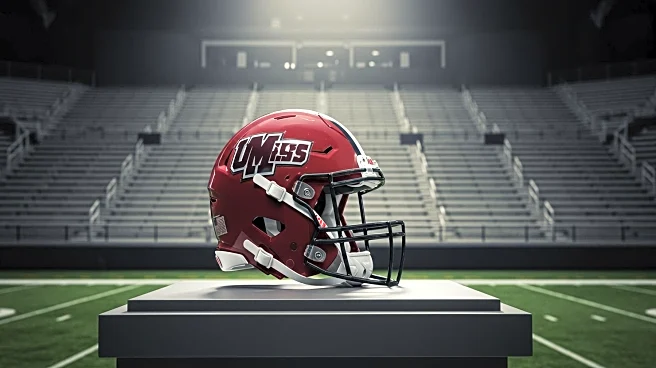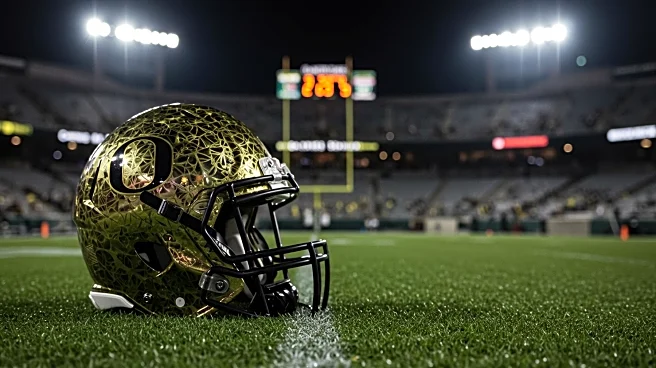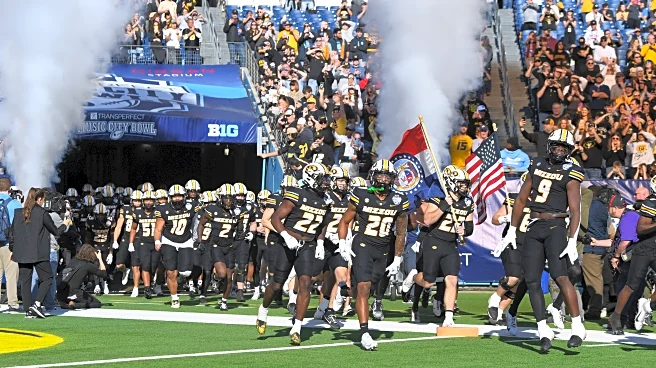What's Happening?
The Oregon Ducks have revealed comprehensive details about their new indoor practice facility, currently under construction next to Autzen Stadium in Eugene. The facility, named '2.Mo,' spans 170,000 square feet, including 130,000 square feet of field space and a 40,000 square foot connector to the Hatfield-Dowlin Complex (HDC). This connector will feature an expanded weight room and a players' lounge. The facility is set to be one of the largest in the nation, standing nearly 100 feet tall, and will include direct access to two outdoor practice fields. Additional amenities include a classroom/meeting room for film review, nutrition and recovery areas, and a rooftop players' lounge overlooking Autzen Stadium. The construction is expected to be completed by 2027, with the team currently utilizing Rich Brooks Field and the Moshofsky Center for practices.
Why It's Important?
The development of this state-of-the-art facility underscores the Oregon Ducks' commitment to enhancing their athletic training infrastructure, which could significantly impact their performance in collegiate sports. By providing advanced training amenities, the facility aims to attract top-tier talent and improve player development. This investment reflects broader trends in college athletics where institutions are increasingly prioritizing high-quality training environments to gain competitive advantages. The facility's completion could bolster the Ducks' reputation and competitiveness in national college football rankings, potentially influencing recruitment and game outcomes.
What's Next?
As construction progresses, the Oregon Ducks will continue to utilize existing facilities for their training needs. Upon completion, the new facility is expected to become a central hub for the team's athletic activities, offering enhanced training capabilities. The unveiling of the facility's details may prompt other collegiate programs to consider similar investments in their infrastructure, potentially leading to a shift in how college sports teams approach training and development. Stakeholders, including university officials and athletic directors, will likely monitor the project's impact on team performance and recruitment closely.
Beyond the Headlines
The construction of such a large-scale facility raises questions about the financial implications for the university and its athletic department. It highlights the increasing commercialization of college sports, where investments in infrastructure are seen as essential for maintaining competitiveness. This trend may spark discussions about the balance between educational priorities and athletic investments, as well as the ethical considerations of such expenditures in the context of higher education.
